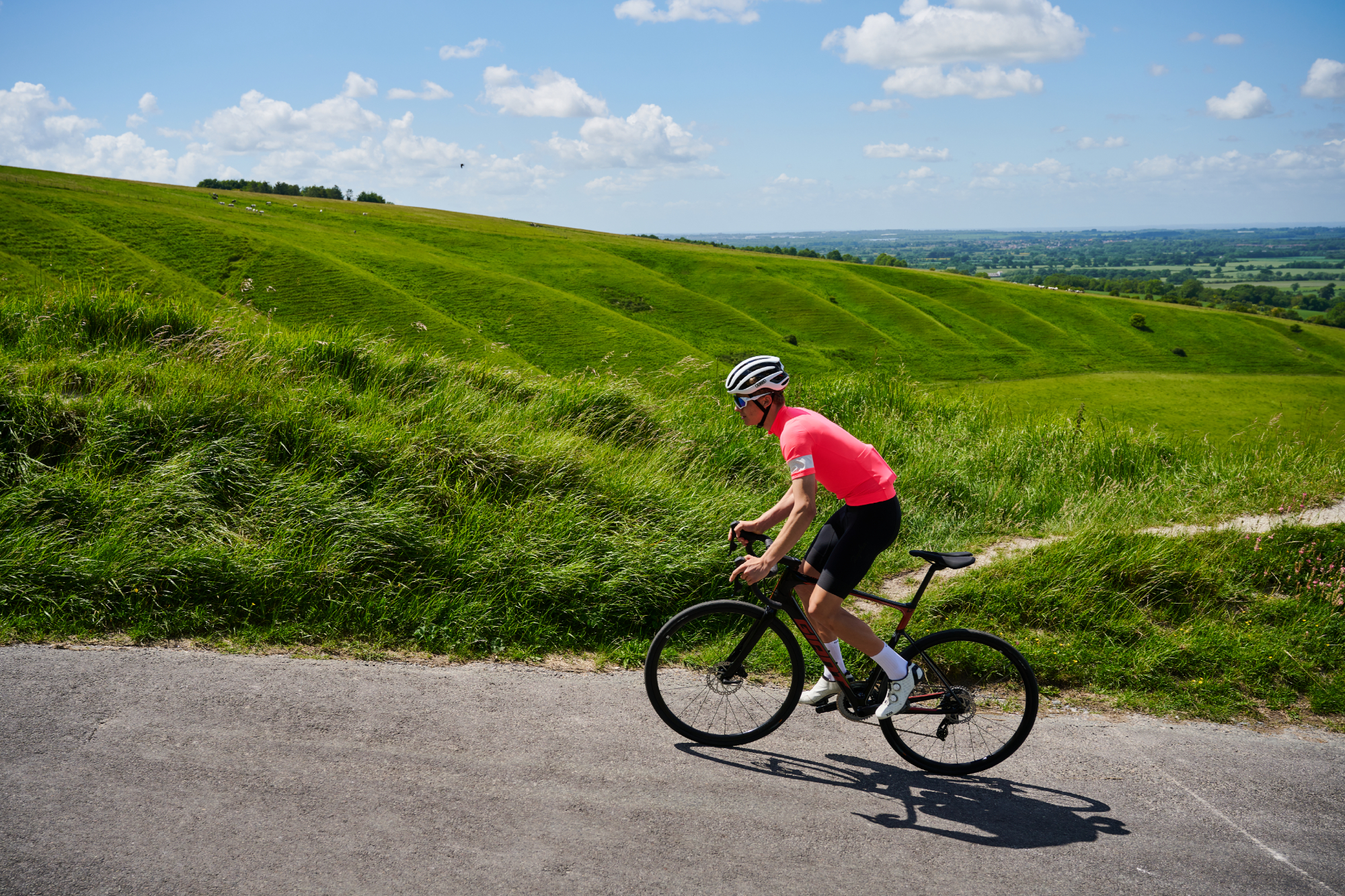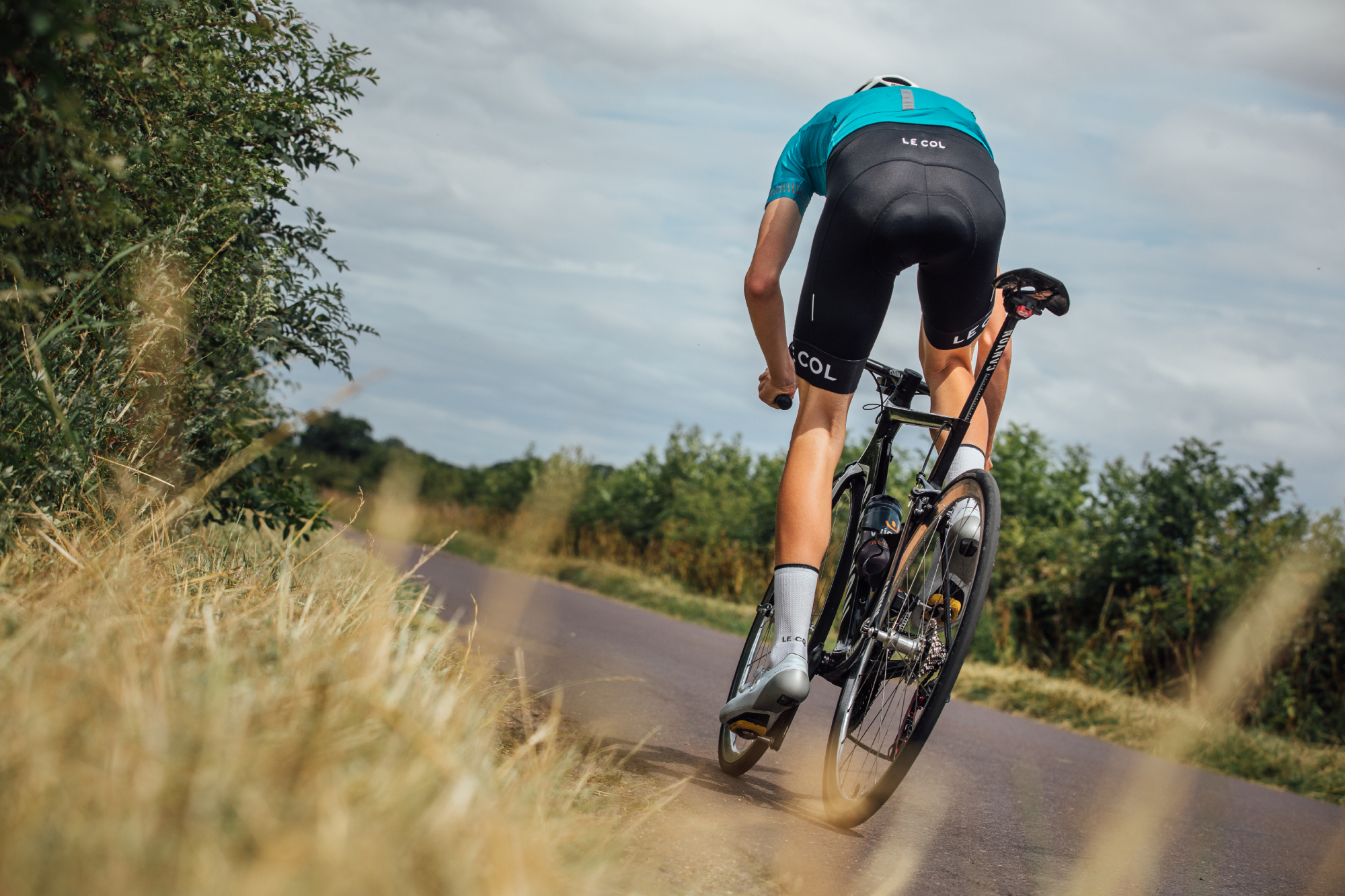
Watching the Tour de France, there has been a plethora of long, mountain passes upon which we’ve seen Jonas Vingegaard and Tadej Pogačar battling it out with epic displays of muscular endurance.
But we’ve also been treated to some shorter, sharper climbs which have often been decisive in determining the result of a breakaway and also the effort at the end of stages, think Mads Pedersen winning stage 8 with immense muscular strength.
These are climbs most of us can relate to; it’s only a lucky few who have those sinuous mountain climbs on their doorsteps. Besides, it’s the shorter, sharper climbs that appear most often in domestic races and sportives - and - there are more of them available to target for Strava leaderboard bragging rights.
But what about those climbs of a more middling length? At just what point does muscular strength stop being the primary determinant of your climbing prowess, with muscular endurance instead taking center stage?
Muscular strength versus muscular endurance - what’s most important on short climbs?
30 second climbs

Let’s start with the shorter 30 second climbs and work our way up from there. It’s worth bearing in mind, though, that for creating Strava segments the recommendation is that these are at least 60 seconds long for sufficiently accurate GPS data. However, it is still important to perform efforts of this duration in racers - or that uphill sprint to a road sign!
These efforts are very much muscular strength based, and more closely resemble a sprint than a climb. As a result, this uses some of the same energy pathways that sprinting does.
Energy pathways, by the way, are the modes by which we generate Adenosine Triphosphate (ATP), and can utilize different methods. For sprints, we use phosphocreatine (PCr) to generate ATP - and, as a result, wattage - very quickly for short periods of time. Generally we only have enough PCr to last for 8-12 seconds of effort, so not quite enough for a full 30 second climb.
This is also an anaerobic system so doesn’t require oxygen and occurs in the Fast Twitch muscle fibers, specifically Fast Glycolytic (FG), which are larger and fatigue quicker than Slow Twitch fibers, Slow Oxidative (SO). And so this is why, if you have a greater amount of FG fibers you generally have a more powerful sprint and will perform better over these shorter duration climbs.
Even though the PCr system runs out before the end of the 30 seconds, we then use glycolytic carbohydrate metabolism, which involves breaking down carbohydrates without oxygen (anaerobically) to produce power quickly. FG fibers are very much all about muscular strength as they generate the most force but have poor endurance and fatigue quickly.
1 to 3 minute climbs

As we move onto longer climbs, up to a duration of about 3 minutes, we are still primarily using the anaerobic pathways to fuel the workload. At this point, we are using the glycolytic system, and therefore Fast Glycolytic fibers, so muscular strength is still a key factor - but we do also use Fast Oxidative (FO) fibers. These use aerobic pathways to generate power, so fatigue slower than FG fibers, but produce more force than Slow Oxidative (SO) ones.
However, they can also use anaerobic pathways and glycolysis to generate power. So, when we are doing 30 seconds to 3 minute long climbs, we are using both of these muscle fibers to generate force. This is a mix of muscular strength and muscular endurance, but still weighted more towards muscular strength.
3 to 5 minute climbs

After this 3 minute mark, we get to efforts which would often be described as maximal aerobic efforts (MAP). This terminology is slightly misleading as - although we are having to use aerobic pathways, with the breakdown of fuel using oxygen - we are also still generating power using anaerobic pathways, too.
This will be via a combination mainly of FO and SO fibers to generate the power. But we are getting more into the realms of muscular endurance, and that’s why we quite often see that riders who perform well over longer duration climbs also perform well over shorter - yet not super short - climbs.
When we look at a climber who can perform well on long mountains, they need to have a very big aerobic engine. Basically, they need to be able to take in a lot of oxygen (big lung capacity), be able to get that oxygen into the blood (better diffusion), carry lots of oxygen in the blood (high hemoglobin and hematocrit count), transport it to the working muscles (high capillary count), and then use it to breakdown fuel sources to produce ATP and power (high mitochondrial function and density).
This is also why those riders who are fastest on the climbs are also often very good time trialists, as they have superb aerobic performance. A better aerobic system lends itself to better muscular endurance, as their muscles can keep generating higher forces for longer periods of time.
The muscles used for these efforts are SO muscle fibers. These are dark red in color due to high capillary and mitochondria count but produce a lower peak force - which is why often good time trialists or GC riders cannot produce the same peak power as sprinters. This big aerobic performance is also why these riders will perform well for climbs that are longer than 3 minutes as, although those efforts are a lot shorter, they still require a fairly large aerobic contribution. This is why even on a climb such as the Mur de Huy at Fleche Wallonne, Pogacar was still the fastest up to the top (better fatigue resistance also plays a role, but that can be aided by a better aerobic performance). It’s when we get to the shorter efforts that things start to change.
Once we go below 3 minutes and anaerobic performance comes more into play, we see the differences in how riders produce power. Let’s look at Mads Pedersen and Jasper Philipsen. On every true sprint stage at this year's Tour de France, Phlilipsen has been the fastest, likely because he has a higher proportion of FG fibers than the other riders so produces a huge peak power for 8-12 seconds, in other words better muscular strength.
But on Stage 8 of the Tour de France, he was outdone by Pedersen. Even more telling was the way he was beaten - he ran out of gas before the line and had to sit down. So although Pedersen isn’t a ‘true’ sprinter, he clearly has a great glycolytic capacity to do those 30-60 second efforts and can outlast the pure sprinters on uphill rises - it has become a sort of specialty for him. This meant that after the riders had depleted their PCr energy system, they had to rely on the very fast breakdown of carbohydrates and this turned the tables in Pedersen’s favor. This does highlight that, although muscular strength is still important, there has to be a level of muscular endurance as well - even if it is a more anaerobic one.
How to train for short climbs

In terms of how we can improve our performance for these different types of climbs, there is quite a significant variance as the energy systems they utilize are quite different in themselves.
For the shorter 30 second climbs, it’s all about going as hard as you can for periods between 20-60 seconds and improving at managing the fatigue sensations that comes from a big sprint, and then holding the effort. Creatine supplementation has been shown to aid these sorts of efforts as having more PCr available in the body can increase how long we can sustain that maximal sprint effort.
For 1 to 3 minute climbs, doing maximal efforts within this range will improve our glycolytic performance, so you also want to make sure you’ve topped up nicely with carbs beforehand so there are plenty available for breakdown.
For anything longer than that, it’s a combination of long endurance work to improve muscle capillarization, and maximal aerobic efforts and VO2max work to increase mitochondrial density as well as the amount of oxygen we can use to break down fuel sources.
Additionally, strength training in the gym has been shown to be very beneficial across the board. High-torque strength movements can improve the amount of muscle fibers that we recruit. On the other hand, high-torque and high-speed movements can really improve our peak force production and sprint efforts. It has also been found that strength work improves muscular endurance, too as it can reduce the rate of fatigue across fiber types.
So, to summarize, the type of climb that you do will dictate whether that requires an emphasis towards muscular strength or endurance. But doing specific training on the bike and in the gym can help improve both those factors. If you’ve got a hill climb coming up - or a particular Strava KOM you want to take - tailoring your training towards strength or endurance can help you perform better at that target duration.







